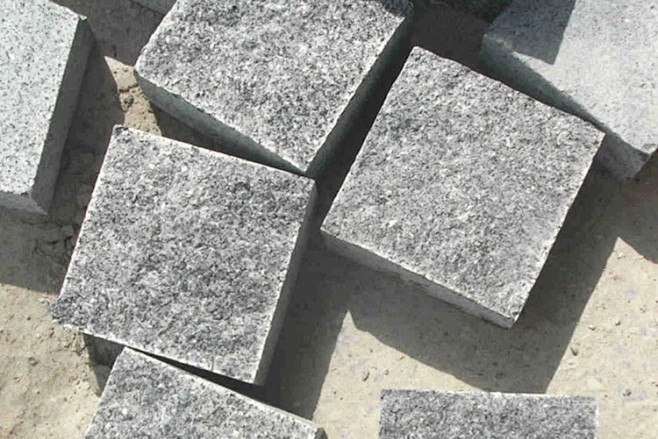
Stone polishing pad: Why it can make stone shiny like new
Detailed Explanation of the Function of Stone Polishing Pad
1. Application of stone polishing pads in stone surface treatment:
Stone polishing pads are essential tools for treating stone surfaces, including granite, marble, and other natural stones. These pads are designed to promote polishing, grinding, and de-abrasion of stone surfaces, resulting in a smooth, shiny finish. By using stone polishing pads, one can effectively enhance the visual appeal and durability of stone surfaces, making them suitable for a wide range of applications in residential and commercial settings.
2. Advantages of stone polishing pads:
Stone polishing pads offer a variety of benefits that make them play an important role in stone surface treatment.
High brightness: Stone polishing pads are designed to enhance the brightness and shine of stone surfaces, resulting in a visually appealing finish that showcases the stone's natural beauty.
Effective treatment: Stone polishing pads can effectively treat stone surfaces to resolve blemishes, scratches, and unevenness, resulting in a smooth and delicate texture.
New stone effect: By using stone polishing pads, one can achieve a new stone effect, refreshing worn or weathered stone surfaces and restoring their visual appeal.
3. Enhance the effect of the stone surface:
Stone polishing pads play a key role in improving the quality and beauty of stone surfaces. Whether used for polishing, grinding, or scuff removal, these pads help achieve a high-quality finish that enhances the overall visual impact and aesthetics of a space. The use of stone polishing pads ensures that the stone surface is smoother, more refined, and more visually impactful, making it suitable for a variety of applications in both interior and exterior design.
In summary, stone polishing pads play an important role in stone surface preparation, providing a range of benefits that help achieve a high-quality polish. By using these pads, one can effectively enhance the visual appeal and durability of stone surfaces, making them suitable for a wide range of applications. The use of stone polishing pads can make the stone surface smoother, more delicate, and visually stunning, making it a valuable asset for stone surface treatment and enhancement.
The Principles of Stone Polishing Pads in Surface Treatment
Stone polishing pad principle:
The principle of the stone polishing pad is to use mechanical rotation to generate power, which drives the polishing particles on the surface of the pad to rub against the stone surface. This mechanical action continuously reduces the high points or protrusions on the stone's surface, gradually flattening the surface and creating a smoother texture.
Friction and heat generation:
During the friction process, the polishing particles on the stone polishing pad also rub against impurities on the stone surface, generating heat. This heat softens or melts impurities on the surface of the stone, further eliminating and clearing surface obstructions. As a result, the stone surface becomes smoother and more refined, enhancing its overall visual appeal and functionality.
Effective surface treatment:
The mechanical action of stone polishing pads ensures that blemishes, scratches, and unevenness on the stone surface are effectively addressed. By utilizing the principles of mechanical rotation and friction, these pads help achieve a high-quality finish that enhances the brightness, shine, and smoothness of the stone surface.
Advantages of surface treatment:
Stone polishing pads offer several advantages in surface preparation, including the ability to achieve high brightness and a good finish. These pads can be used for polishing, grinding, and wear removal to effectively restore the appearance of the stone surface and make the stone look like new. The mechanics behind stone polishing pads ensure the process is efficient and precise and help achieve a visually appealing and durable finish.
In summary, the principles of stone polishing pads are rooted in the mechanical processes of rotation, friction, and heat generation, which together contribute to the effective treatment and enhancement of stone surfaces. By utilizing this principle, one can achieve high-quality finishes that enhance the visual appeal and durability of stone surfaces, making them suitable for a wide range of applications in both interior and exterior designs.

Stone Polishing Pad Selection and Use
1. Choose the right stone polishing pad:
Choosing the right stone polishing pad is crucial to achieving the desired results. Polishing pads of different colors represent different uses. Before choosing a polishing pad, you must determine the hardness and texture of the stone. The process typically involves a transition from coarse to fine grinding, with each color pad serving a specific purpose in the process. By choosing the right polishing pad, an individual can effectively tailor the polishing process to the unique characteristics of the stone, ensuring efficient, precise results.
2. Pay attention to the details of the polishing pad:
Before using a polishing pad, you must ensure that the stone surface is clean. Do not soak or allow polishing pads to come into contact with wet or incompletely cured adhesive. Attention to these details ensures that the polishing process takes place under optimal conditions, minimizing the risk of problems that may affect the quality of the treatment.
3. Prioritize safety during use:
Safety is paramount when using stone polishing pads. Professional work gloves and masks must be worn to protect against dust and particles generated during the polishing process. Additionally, ensuring the workplace is well ventilated is crucial to prevent dust from being inhaled into the respiratory system. By prioritizing safety measures, individuals can safeguard their own well-being and ensure a supportive work environment.
4. Polishing pad maintenance:
After completing the polishing process, it is important to clean the polishing pad and store it in a ventilated, dry place away from direct sunlight. Properly maintaining your polishing pad will help extend its life and achieve optimal performance, ensuring it remains effective for future use.
In conclusion, mastering the selection and use of stone polishing pads is critical to achieving a high-quality finish and enhancing the visual appeal of your stone surface. By choosing the right polishing pad, paying attention to detail, prioritizing safety during use, and maintaining the polishing pad, individuals can ensure efficient and precise results, making the polishing process a valuable investment in enhancing the beauty and durability of stone surfaces.

Conclusion
Stone polishing pads play a vital role in the treatment and enhancement of stone surfaces, and have many advantages such as high brightness and effective treatment effects. They are mainly used for polishing, grinding, scuff removal, and other treatments to achieve a smoother, newer look on stone surfaces. The principle of the stone polishing pad is that mechanical rotation generates power, which drives the polishing particles to rub against the stone surface, reducing high spots, eliminating impurities, and making the surface smoother. When using stone polishing pads, you must choose the right polishing pad based on the hardness and texture of the stone, ensure a clean surface, prioritize safety measures, and maintain optimal performance of the polishing pad. By following these guidelines, users can achieve optimal results while ensuring safety and avoiding losses caused by improper use.
-
Online service
-
Official wechat
account
-
QQ:40933769
-
E-mail:
sales@z-lion.com
Online service
Please feel free to give your inquiry in the form below. We will reply you in 24 hours.

